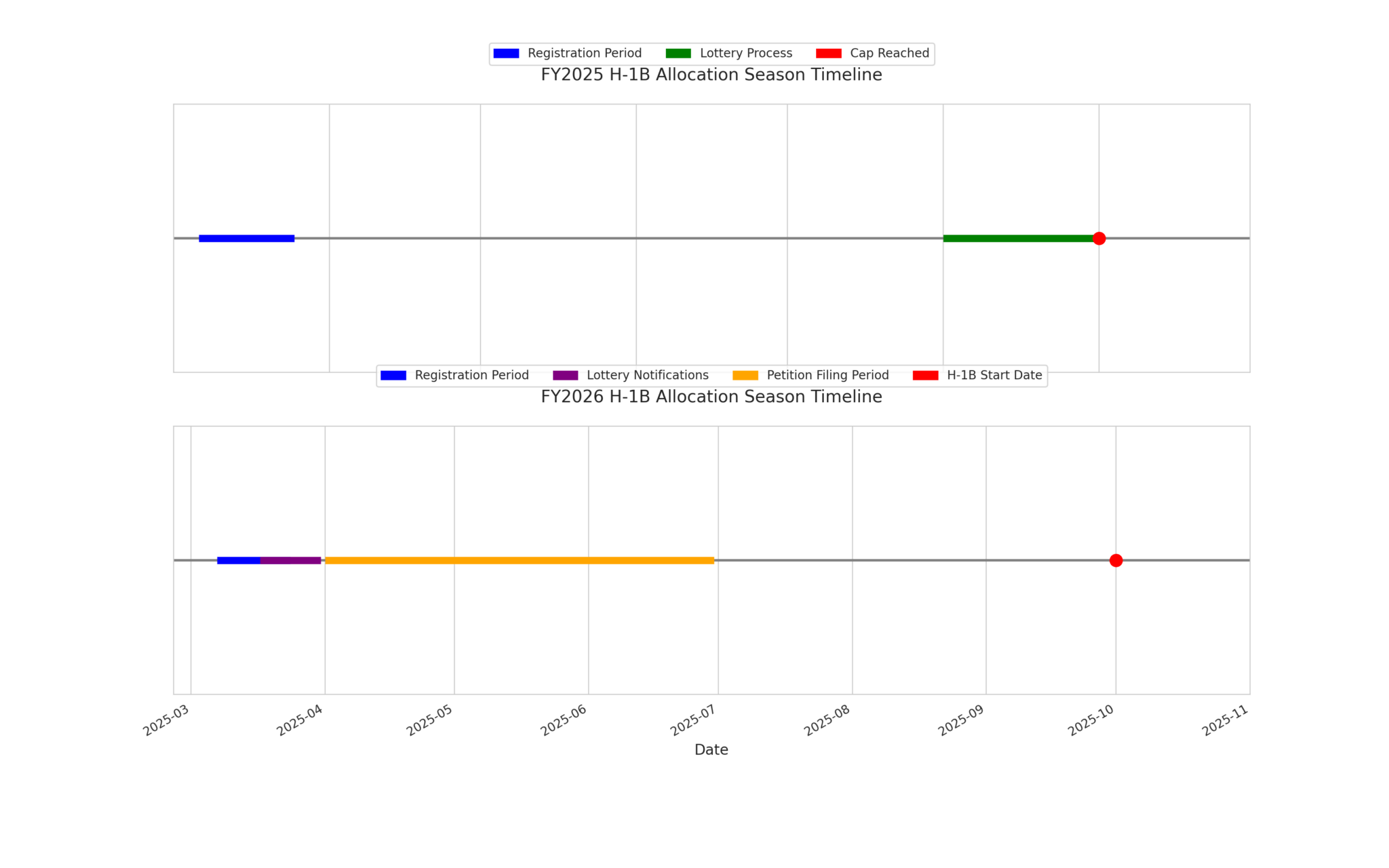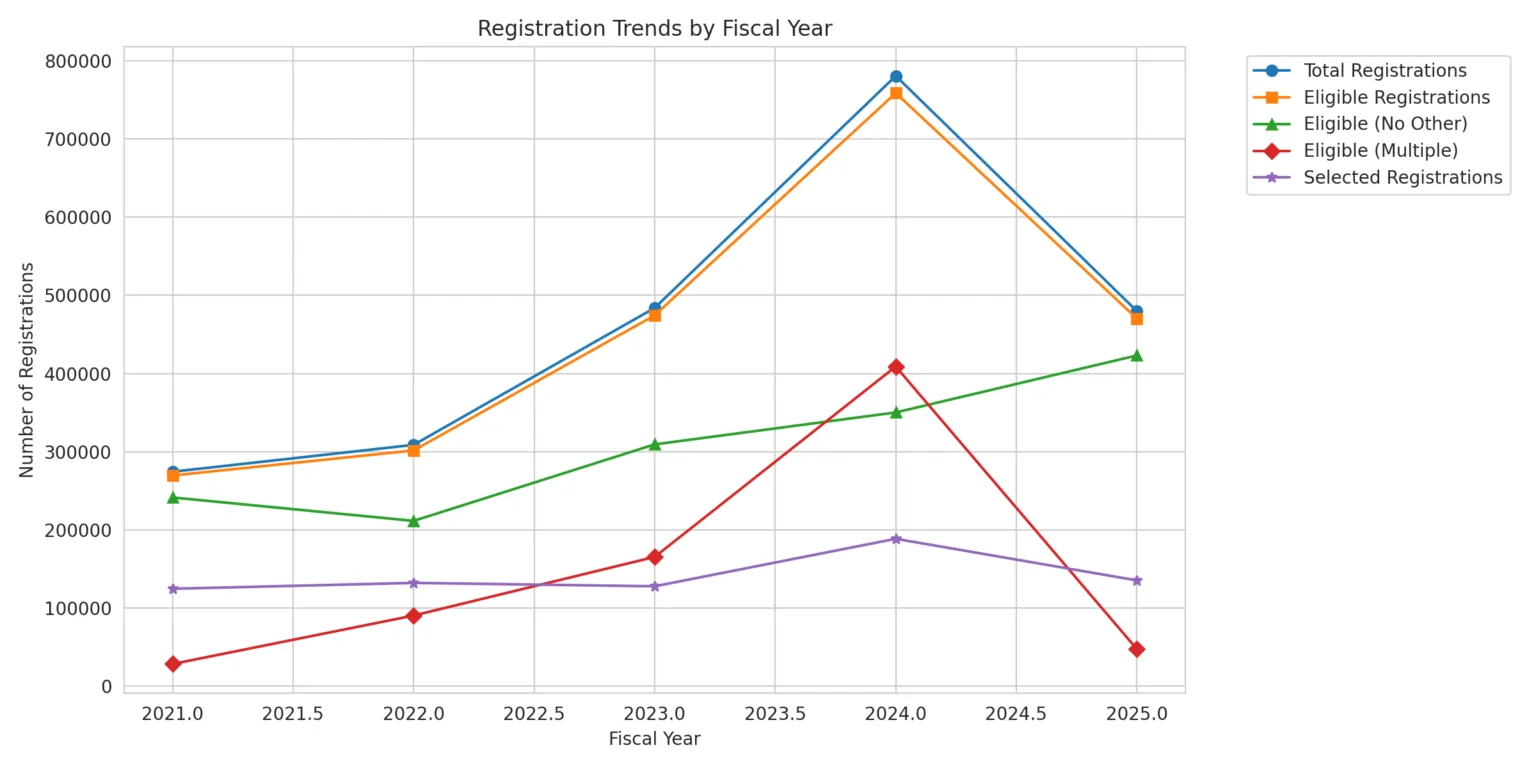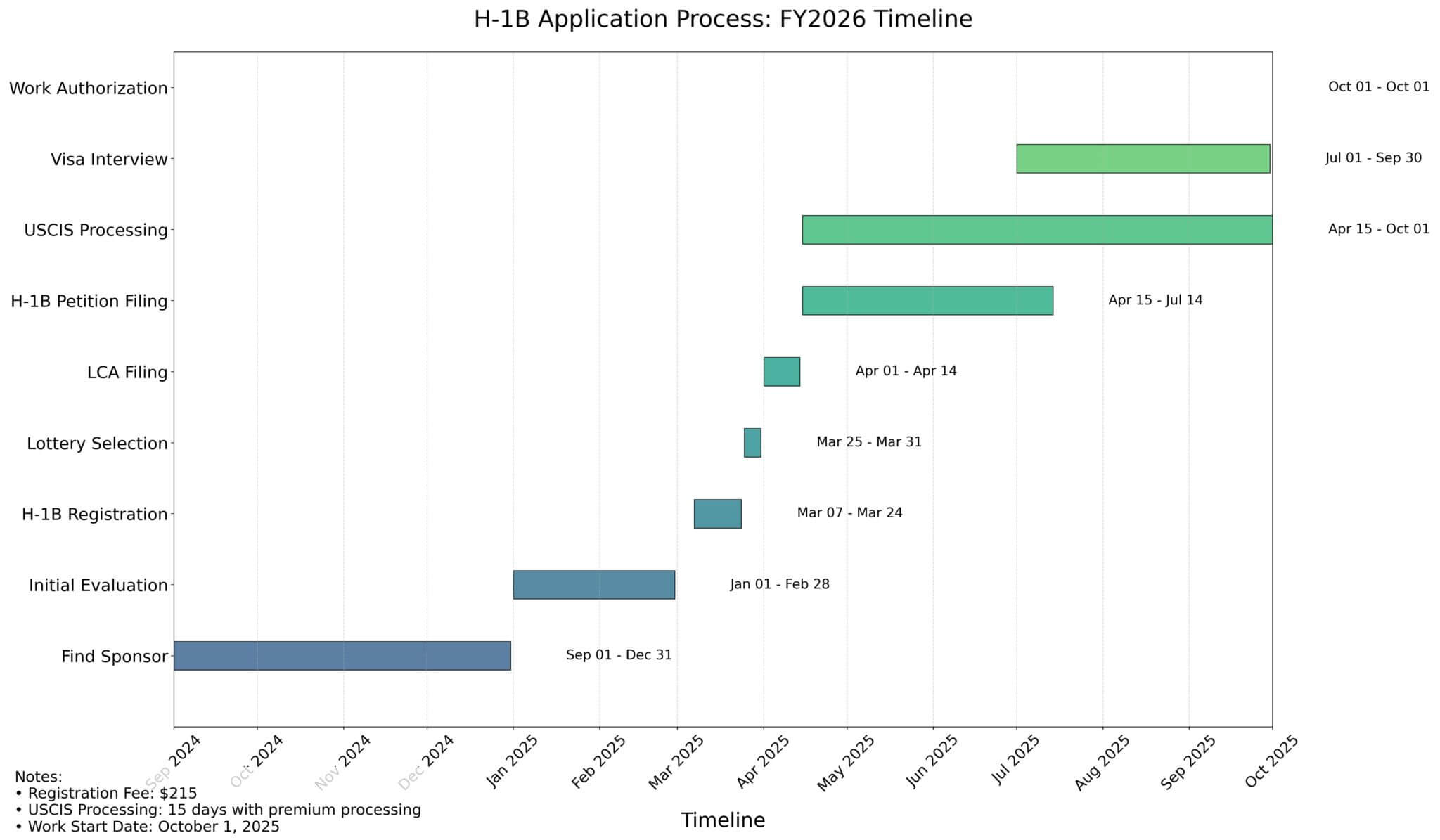H-1B visa updates 2026: key changes, trends and registration process
The H-1B visa program continues to evolve, with significant updates expected in 2026. Key changes include a higher H-1B registration fee of US$215 per applicant, a beneficiary-centric selection process, and system enhancements to streamline applications.
With increasing competition and evolving regulations, early preparation is essential for applicants and employers. Understanding H-1B selection trends, approval rates and the latest USCIS policies can improve chances of securing a visa. Stay informed on H-1B visa updates, registration deadlines and policy changes to navigate the 2026 cycle effectively.
Key observations
- Registration numbers – Sharp increase in 2023-2024 after the pandemic drop.
- Selection rates – Declined overall but showed improvement in 2024.
- Final approvals – Consistently near but below the cap due to withdrawals or denials.
- Trend impact – Increasing competition makes strategic preparation essential.
H-1B program timeline
- 2023 – USCIS implements measures to detect fraudulent registrations.
- 2024 – Fee increases and new filing procedures take effect.
- 2025 – Further anti-fraud measures and potential selection process updates expected.
- 2026:
- Increased registration fee – The H-1B registration fee has risen to US$215 per applicant, up from US$10 in previous years (USCIS).
- Beneficiary-centric selection process – USCIS continues the selection process introduced in FY 2025, choosing registrations based on unique beneficiaries rather than individual registrations (USCIS).
- System enhancements – USCIS has introduced improvements, including:
- Pre-population of Form I-129 fields from selected H-1B registrations.
- Bulk upload feature allowing spreadsheets of beneficiary data to pre-populate H-1B registration fields (USCIS).
These updates reflect USCIS’s ongoing efforts to improve the H-1B program’s efficiency and integrity.
Mission statement
“The H-1B visa program helps American companies recruit highly skilled foreign nationals when there is a shortage of qualified workers in the country.” – USCIS




